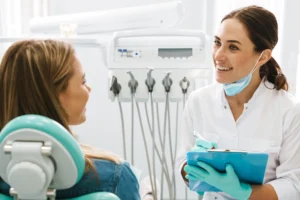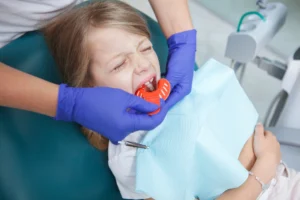In modern restorative dentistry, precision is often measured in microns. But when it comes to practice performance, the most important measurement may be minutes.
Every hour in the operatory represents potential value. When a workflow is predictable, that value compounds. When it is inefficient, it quietly erodes.
Time is the most valuable capital in a dental practice, and the way it is managed determines not only clinical quality but also long-term profitability.
Understanding the Economics of Time
Most practices measure production through procedures or daily revenue. Yet behind every metric is the variable of chair time.
Every appointment includes fixed costs that rarely appear on paper: staff wages, sterilization, material usage, and opportunity cost. When a restoration requires an extra fitting, a second impression, or an unplanned adjustment, the loss is greater than a single hour. It affects the entire schedule.
Small inefficiencies create hidden financial drag. Even ten minutes of preventable rework per case can accumulate into hundreds of hours per year. The result is reduced production, added stress, and less capacity to serve new patients.
When viewed through that lens, precision becomes not just a clinical advantage but a financial one.
Predictability as a Financial Lever
Predictability allows a practice to treat time as an asset instead of a variable.
In a predictable digital workflow, each case follows a repeatable sequence. Scanning, design, and fabrication occur within defined timeframes, and delivery appointments stay on schedule.
That reliability translates directly to revenue. When outcomes are consistent, scheduling becomes efficient. Teams can plan confidently, allocate resources accurately, and avoid the last-minute changes that disrupt production days.
Practices that master predictability often find they do not need to work harder to grow. They simply work more efficiently.
Where Time is Lost in Traditional Workflows
Analog processes are inherently unpredictable.
Physical impressions, material expansion, and manual verification introduce variables that are difficult to control. Even a small imperfection in an impression can create bubbles or surface distortion that lead to inaccurate models. Each correction adds minutes of chair time and consumes material costs that are rarely considered.
A single full-mouth impression can use up to twenty dollars in PVS material alone. When repeated across multiple adjustments or remakes, that expense adds up quickly, often exceeding the apparent savings of staying with traditional methods.
Each adjustment consumes chair time that could have been spent on another patient. Over the course of a week, those small interruptions compound.
Traditional workflows also increase dependency on external factors such as shipping, lab turnaround, and physical verification steps. Every variable introduces delay and uncertainty, which ultimately consume the one resource that cannot be recovered: time.
Digital Workflows Create Measurable Gains
Digital systems change the equation by turning uncertainty into consistency.
When data capture is digital, every stage of the workflow becomes more predictable and repeatable. Yet not all digital capture methods perform the same. Understanding the difference between intraoral scanning and photogrammetry is essential when evaluating true efficiency and accuracy.
Intraoral Scanning
Intraoral scanners (IOS) have become a standard in restorative dentistry. They simplify data capture, reduce material waste, and improve patient comfort compared to traditional impressions. For single units and short spans, modern IOS devices achieve excellent accuracy.
However, when used for full-arch or multi-implant restorations, sequential scanning introduces potential error. Each pass must be stitched together digitally, and even small movements or angulation changes can create cumulative distortion across the arch. These inaccuracies often require additional verification steps or adjustments during delivery, which can reduce the efficiency gains digital systems are meant to provide.
Photogrammetry
Photogrammetry resolves these limitations by capturing all implant positions simultaneously. Rather than relying on sequential image stitching, it records the spatial relationships between implants using calibrated cameras and triangulation algorithms.
This method achieves sub-five-micron accuracy across an entire arch and eliminates the need for a verification jig or manual correction. The resulting dataset aligns perfectly with the laboratory’s design software, allowing frameworks to be fabricated and seated with minimal or no adjustment.
For complex restorative work, photogrammetry is the difference between a digital workflow that is simply faster and one that is truly predictable.
Cases move forward faster. Restorations seat with precision. Patients spend less time in the chair.
Each of these improvements frees capacity without increasing staffing or hours. The result is higher revenue potential and a more stable, controlled workflow.
Scaling Through Efficiency
Once a practice begins to measure time as capital, the potential for growth becomes clear.
Predictable workflows allow teams to schedule more aggressively without increasing risk. Appointment lengths can be reduced safely, and more patients can be treated in a day without compromising care.
In some cases, practices that adopt photogrammetry-based workflows reduce total case time by 20 to 30 percent. Across a year, that difference represents hundreds of additional hours of productive time.
Efficiency does not only improve profitability. It also improves quality of life. Shorter chair time means less fatigue for the clinical team, fewer late days, and more focused patient interactions. Predictability builds sustainability as well as scale.
Precision, Productivity, and Patient Experience
Efficiency and patient care are not opposites. They are interdependent.
When a practice operates with digital precision, patients experience smoother treatment. Fewer appointments, shorter visits, and confident delivery create a sense of trust and professionalism.
That patient confidence becomes a growth engine of its own. Fewer disruptions mean better reviews, stronger referrals, and higher treatment acceptance.
The link between predictability and profitability is therefore not only operational. It is experiential. Predictability builds satisfaction, and satisfaction builds retention.
The Future of Measured Dentistry
As digital workflows become the standard, time management will evolve from intuition to calculation.
Photogrammetry, in particular, offers a measurable path forward. It removes uncertainty from capture, accelerates delivery, and standardizes quality across every case type.
The result is a more stable business model where revenue is not dependent on effort but on precision.
In the same way a financial system relies on accurate accounting, a digital practice relies on accurate data. The more precise the input, the more predictable the return.
Time is the practice’s most valuable asset. Predictability is how it grows.
Optimize Every Hour
Predictability begins with precision. Incisive helps practices turn digital accuracy into measurable efficiency through advanced photogrammetry and integrated workflows.
Connect with us to learn how to reduce chair time, streamline scheduling, and grow through precision.



